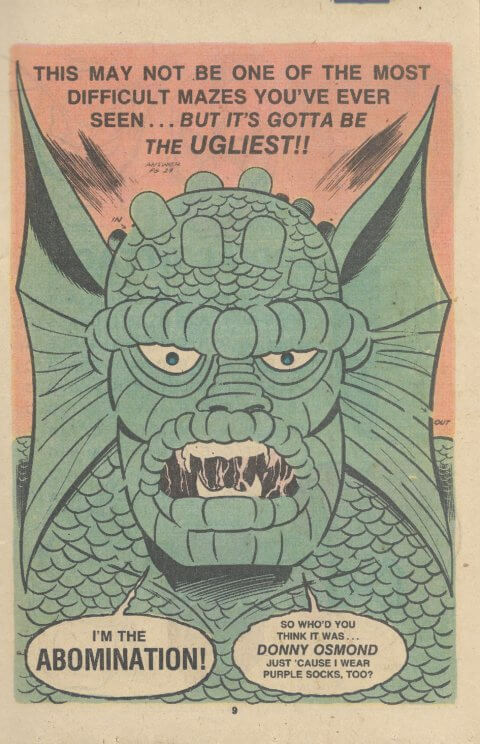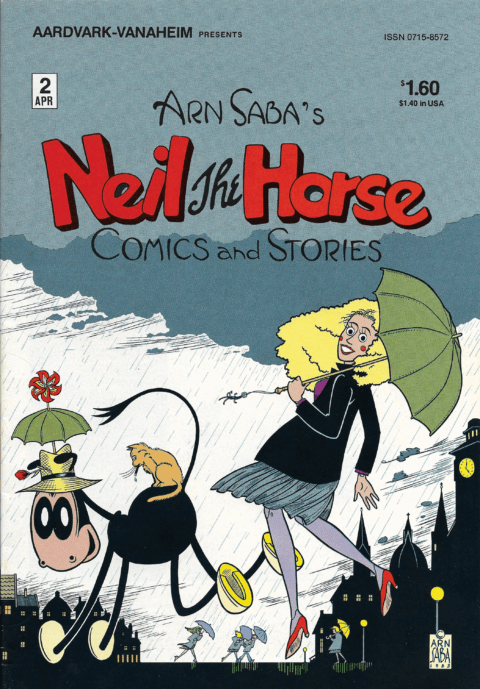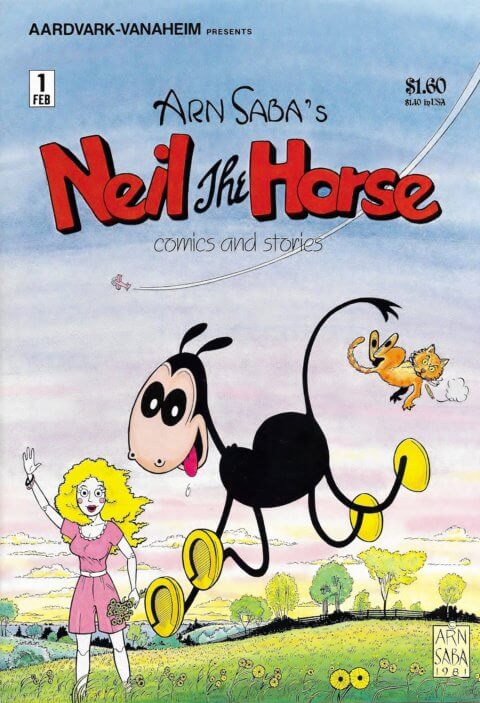The original Aircel comics from the mid-to-late 1980s are some of the best-known from the Canadian Silver Age. Barry Blair’s titles Samurai and Elflord continue to have fans more than thirty years later and other series, like Dragonring, Stark: Future, and Warlock 5 all lasted for more than a dozen issues. Having any series last this long was uncommon for Canadian comics from this era (other than Cerebus), which is part of a broader discussion about Aircel’s continued legacy.
One Aircel series that continues to slip under the radar is Jim Somerville’s Maelstrom. A work of high fantasy, the series lasted for eleven issues from 1987-1988. The series was one of the many casualties of the black-and-white comic crash, was cancelled before the narrative was finished and ended on a cliffhanger. After Maelstrom, Somerville continued in comics for a while, briefly continuing with Aircel after it became an imprint of Malibu as part of the creative team on the 1989 series The Walking Dead (not to be confused with the famous Image comic of the same name). Somerville then worked for Dark Horse drawing Aliens: Newt’s Tale, as well on The Thing from Another World: Climate of Fear (one of their sequels to the John Carpenter film The Thing).
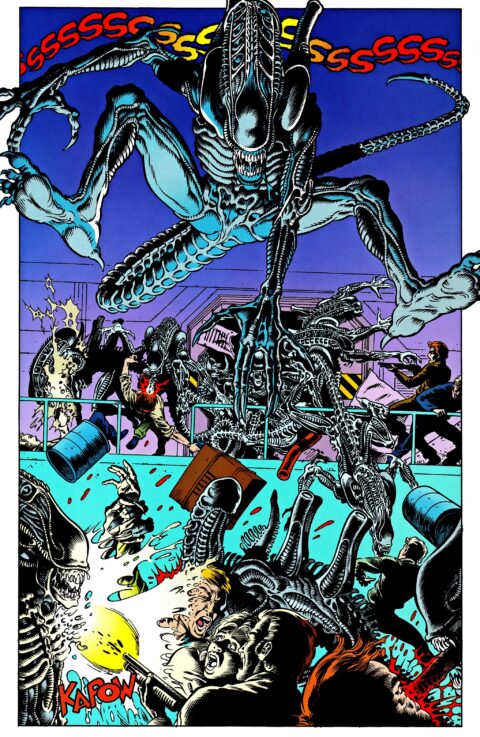
After his Dark Horse run Somerville apparently left comics altogether. Today he does not seem to have a social media presence and there are rumours that he became a tattoo artist (which I have not been able to verify). I asked around, albeit only in a cursory way, and couldn’t dig up any information about him after he left the comics industry.
Knowing this, I had been interested in taking a closer look at Maelstrom for some time. Unfortunately, I had not been able to track down the series unless I was willing to purchase the books individually on eBay, which was cost prohibitive. This changed in February at our first major event of the year, the Nova Scotia Collector Con. This fledgling event was the third one that the organizers had hosted since last year and is akin to the low-key swap meets of yesteryear that collectors and dealers sometimes pine for. Local fantasy novelist Peter Foote was there, as was geek historian Jason Young. Both were promoting recently published books. Shoppers included comic legend Steve McNiven and true crime podcaster Jordan Bonaparte. It was a fun event. However, it was long-time friend of East Coast Toys and Games (and one of Halifax’s greatest comic insiders) Tony White who just happened to have the entire run of Maelstrom for sale at his table. He traded the set to me for what sports fans would refer to as “future considerations” and I promised that I would cover the series as soon as possible.
Thanks, Tony! Here we go.
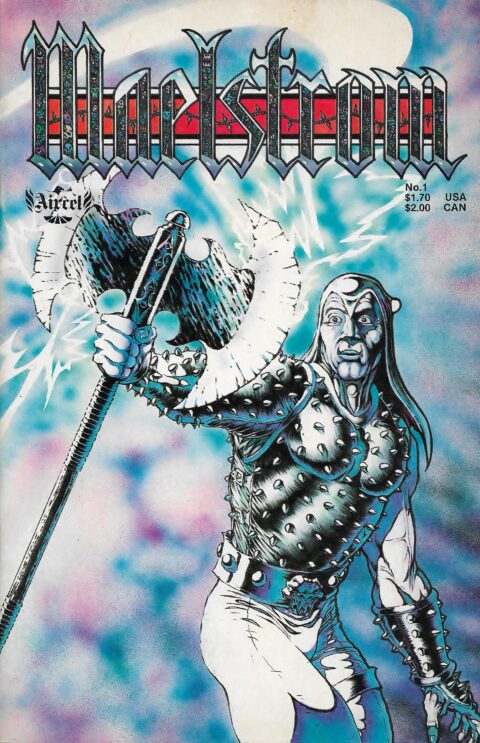
The first issue of Maelstrom begins with the title character entering the castle of a wizard named Han-Kar-Harsh. Maelstrom is what is known as a “headman,” which is effectively an executioner for hire. In this case, he has been hired by a sorceress named Bad-Azz-Brash, queen of the Metaloids. The sorceress expects Maelstrom to bring her the head of Han-Kar.
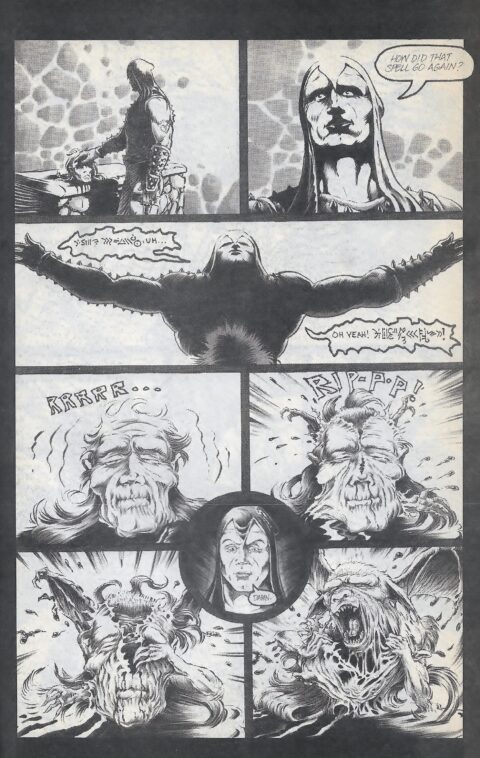
The wizard, however, has other plans and offers Maelstrom his head in exchange for a spell. Han-Kar then casts a spell of his own on Maelstrom’s axe, giving it a great amount of power. Maelstrom decapitates the wizard and then forgets some of the words of the spell he is supposed to cast. Han-Kar’s decapitated head splits in half and a small bat-like creature emerges revealing itself to be Han-Kar himself. Due to Maelstrom forgetting the words, the spell has gone awry with unintended consequences. Had the spell been cast correctly, Han-Kar’s body would have been restored and he would have regained his power.
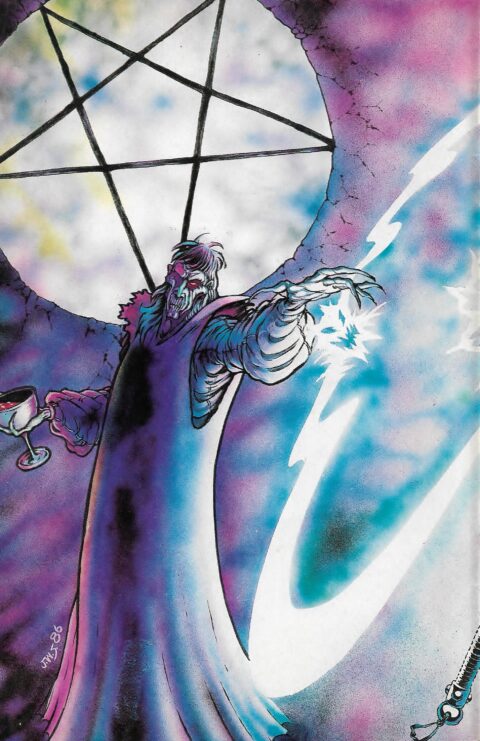
The entire sequence is reminiscent of the well-known scene from Sam Raimi’s 1992 film Army of Darkness, where the hero, Ash, forgets the spell he is supposed to cast and accidentally awakens the Deadites. Here, however, the wizard who could save the world from the Metaloids is turned into a small creature with limited power. The comic ends with the two becoming reluctant travelling companions as Bad-Azz-Brash uses her crystal ball to witness her hired headman’s failure to get the job done.
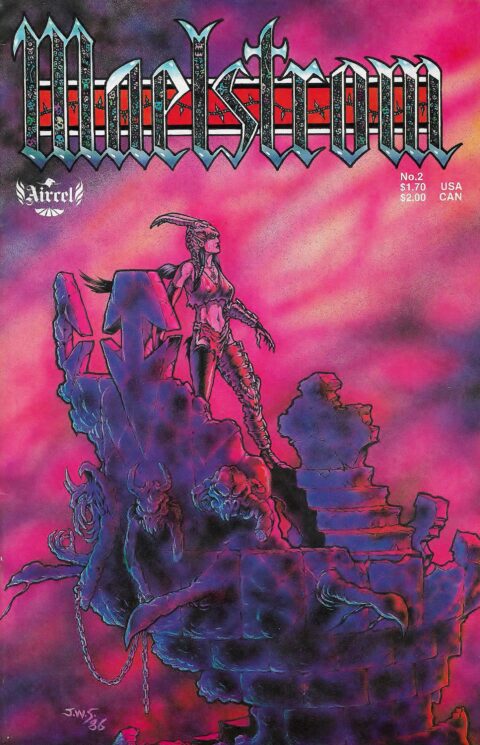
The second issue picks up with Maelstrom and Han-Kar travelling towards Bad-Azz-Brash’s castle, Grim-Blak, when they are attacked by a squadron of Metaloids. The Metaloids are similar in many ways to the orcs that are found across the fantasy genre. However, the Metaloids are extremely apish. One of the Metaloids who is part of this skirmish is winged and quite a bit more powerful than the others. The winged Metaloid chases Han-Kar into the woods, while Maelstrom kills off the rest of the group one by one (as Bad-Azz-Brash and her henchman, who she refers to as “Imp” watch on via the crystal ball). In the end, both characters survive the Metaloids, but Maelstrom passes out from exhaustion. Not to be undone, Bad-Azz-Brash sends her top Metaloid, Major Kaos, to kill Maelstrom and Han-Kar.
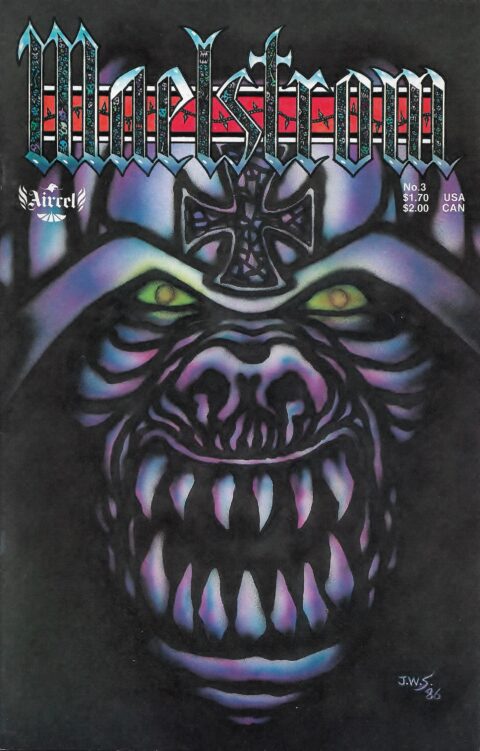
In the third issue of the series, Maelstrom awakens to find that he has been saved by a teenage girl named Kara and her three younger male siblings. The four children are on their way to Grim-Blak in order to enact revenge on the Metaloids for having killed their parents. Maelstrom doesn’t want them to accompany him, but when they reveal that they are proficient archers he changes his mind and they join his party. Meanwhile, a Metaloid raiding party led by Major Kaos heads towards Maelstrom and Han-Kar (destroying everything in their path) when their god, “The Dark One,” manifests itself to Kaos and demands that he kills Bad-Azz-Brash. Kaos agrees and the raiders start heading back to the sorceress’s castle.
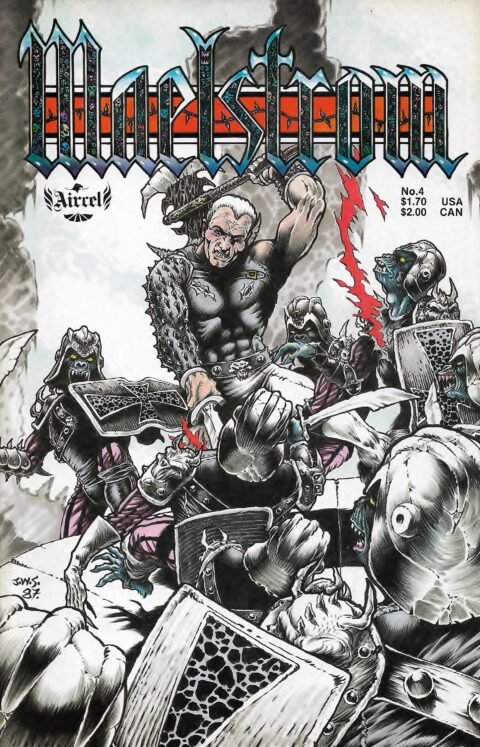
Issue # 4 is extremely action-oriented. Somerville is arguably at his best when drawing weird monsters and action sequences. In the issue, Maelstrom’s party arrives at Grim-Blak and splits into two groups in order to try to find Bad-Azz-Brash. One of Kara’s siblings, Lith, is left outside with their pack animal because he had been previously injured and cannot fight. Maelstrom and Kara head off in one direction, while Han-Kar and the other siblings travel to a different part of the castle. As this is happening, the sorceress learns that her henchman, Imp, is working for The Dark One. She murders him by throwing him off the castle and into the mouth of a giant lizard monster. Ultimately, Maelstrom and Kara are captured by the sorceress, who reveals that she has also captured Lith. Lith is then murdered in front of Kara, as Bad-Azz-Brash works to summon a new monster she calls Shar-Ka. Kara is taken to a jail cell.
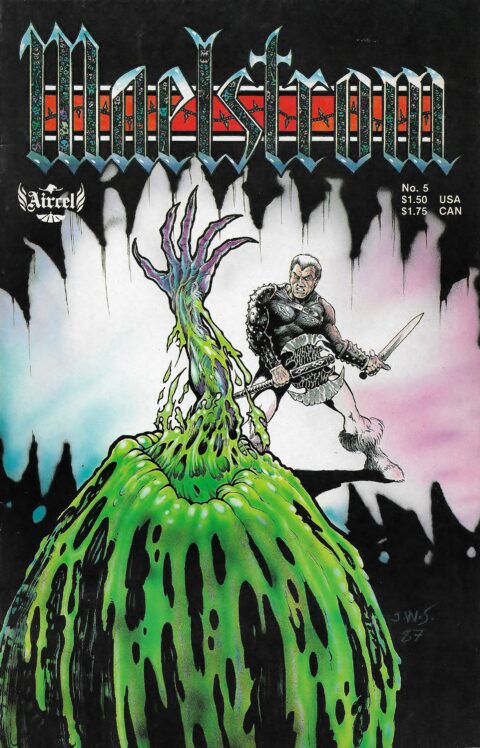
The action continues in issue # 5, where a two-headed beast is hatched from a giant egg and is nearly too much for Maelstrom to handle. As this unfolds, Han-Kar and Kara’s remaining siblings attempt to intervene. However, they are both killed as Han-Kar manages to escape. Kaos captures Bad-Azz-Brash and declares himself King of the Metaloids.
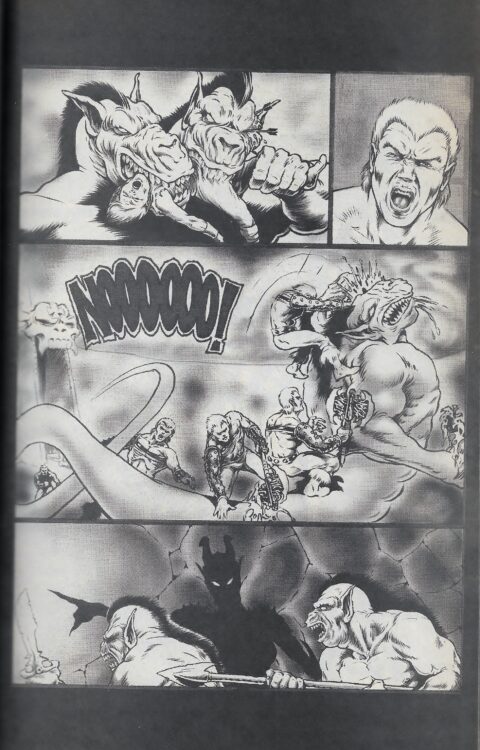
The story arc comes to an end with issue # 6. King Kaos tortures Bad-Azz-Brash, as Maelstrom and Kara attempt to reach the top of Grim-Blak. Sensing that the sorceress is on the verge of death (and that his only chance to have his body restored may be lost), Han-Kar abandons his companions and flies to the top of the castle. Maelstrom and Kara are confronted by Kaos. Maelstrom defeats Kaos, but Kara is killed in the process. The Dark One takes the form of a giant monster and takes Bad-Azz-Brash and Han-Kar-Harsh in both hands announcing that they are going to hell as Maelstrom arrives too late. Then they vanish into thin air. Maelstrom throws his axe to the ground, announces “Fuck It,” and leaves as the story comes to an end.
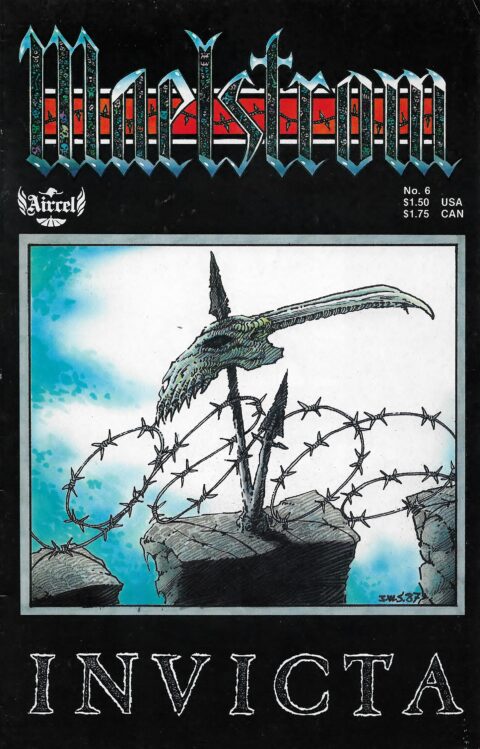
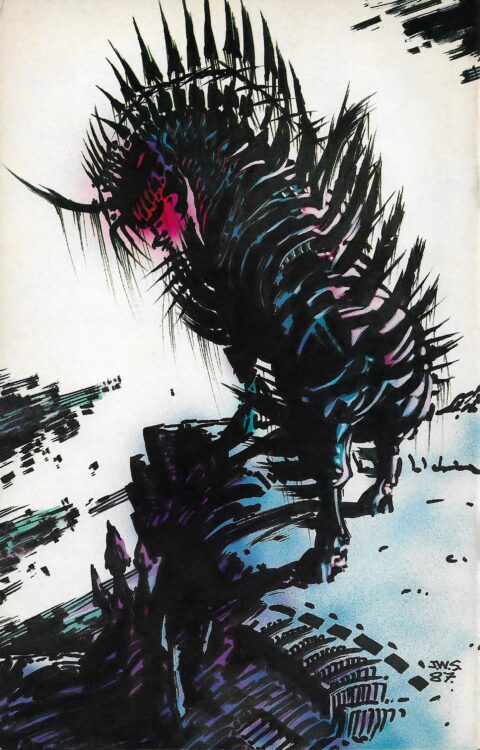
This six-issue story arc is mostly successful and, for the most part, I enjoyed it. In many ways, it is derivative of the sword and sorcery tales that were popular in the 1970s and 1980s due to Marvel’s Conan the Barbarian comics and the brief era when films like Conan the Barbarian, Beastmaster, Red Sonja and others were hitting cinemas. Some of the character names are, honestly, really bad. Bad-Azz-Brash stands out as a particularly horrible character name. Nevertheless, Somerville’s artwork is generally quite good and the story works well enough that this series could have had legs if the black-and-white comics market hadn’t crashed in 1988. Somerville also did a good job of finishing his stories on time and Maelstrom was released monthly during its run. Aircel also used the brief popularity of the comic to promote some of its lesser-known talents in backup stories in issues 2, 3 and 4 that feature artwork by Tim McEown, David Feris and Craig Taillefer.
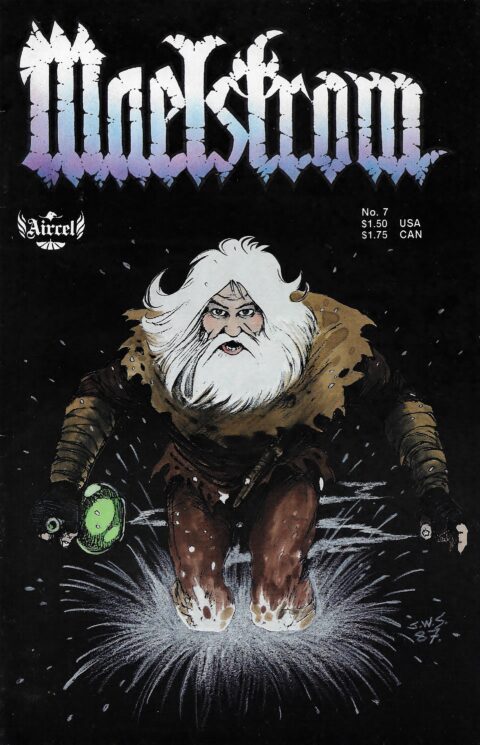
After reading the second story arc, I wish that Maelstrom had ended with six issues. With issue # 7, two years have passed. With the time jump, Maelstrom has grown out his hair and beard and has become a drunkard. The story begins in a swamp where he thinks he is hallucinating having a conversation with a cloaked figure. Elsewhere, a man named Som-Nass stews in his keep as he thinks about how his brother had been wrongly accused of murder and sentenced to death by a bribed judge and jury. He has had all of the culprits killed except for the executioner (who happens to be Maelstrom). He plots with a mutant scientist named Mogadon to capture Maelstrom. The comic comes to an end with a knight named Yor-Deth killing a woodsman and then announcing that he has been summoned by someone who calls to him from afar.
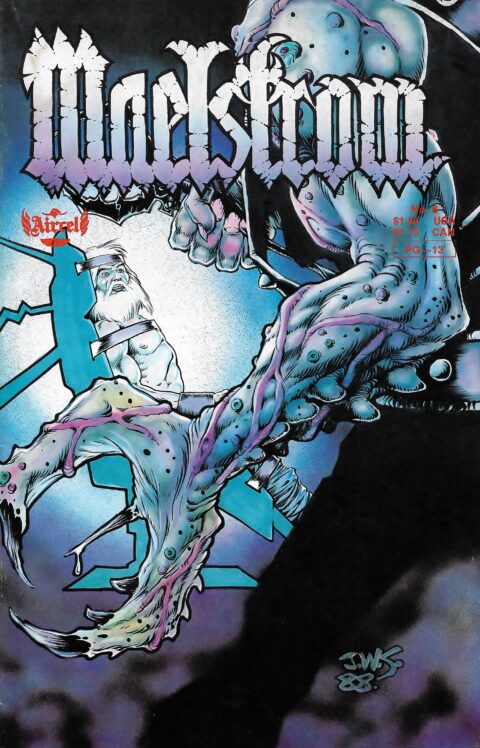
So far, so good. The time jump story and table setting of issue # 7 makes sense in setting up a new story arc. Issue # 8 continues the narrative with Maelstrom being captured by Som-Nass’s henchman Sy-Ko-Jo. He is then brought back to the keep and is tortured by Mogadon. As this is happening the black knight Yor-Deth appears and kills Som-Nass for reasons that aren’t exactly clear. Despite his employer being deceased, Mogadon continues to torture Maelstrom until an anthropomorphic Lion-man named Rak-Kur-Rok arrives to save Maelstrom. Mogadon flees in terror as Maelstrom and Rak-Kur-Rok use an inter-dimensional portal to exit the keep.
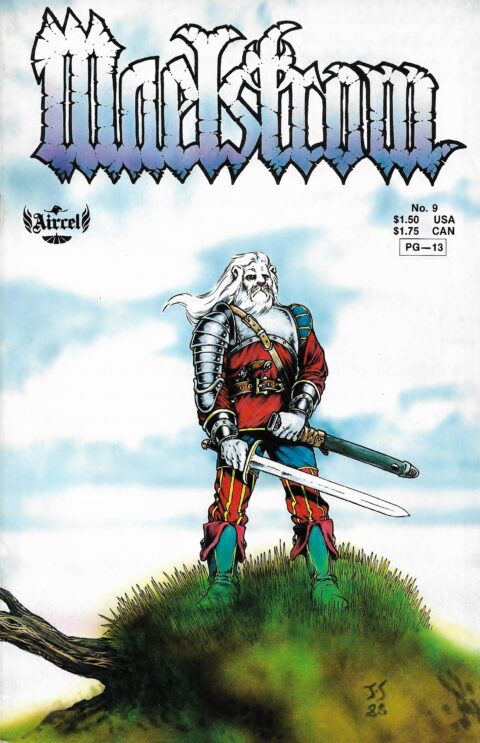
Issue # 9 is where the series starts to fall apart. The issue focuses on the two protagonists travelling through various dimensions through portals as Rak-Kur-Rok attempts to explain his intentions. For the first time, the artwork is really suspect and most of the images are lacking backgrounds. The book feels extremely rushed (though the lack of backgrounds could be explained away by the inter-dimensional travel storyline, this feels like a missed opportunity to present weird, alien worlds). The comic ends with Maelstrom accidentally falling into a portal and disappearing.
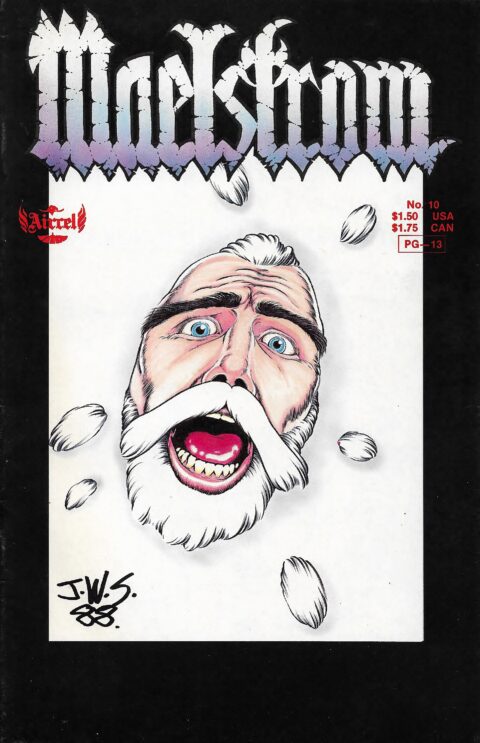
The tenth issue of Maelstrom is where the series jumps the shark. The portal Maelstrom fell into at the end of issue # 9 leads to him jumping out of Jim Somerville’s panel page art at his desk in the Aircel offices and running away into the city of Ottawa. The remainder of the comic is presented as a comedic photo-comic (or fumetti) that involves Aircel employees chasing Maelstrom around Ottawa and trying to force him back into the comic. The only thing of note that happens in the issue is that Maelstrom gets a haircut and new clothing (including a t-shirt of the seminal horror-punk band The Misfits) that makes him look somewhat like Black Flag singer Henry Rollins. The story is, frankly, stupid. Knowing that the series ends with the narrative unfinished makes this issue even more disappointing. I would have rather had the story arc finish than suffer through this mess. The issue ends with Maelstrom being put back into the comic.
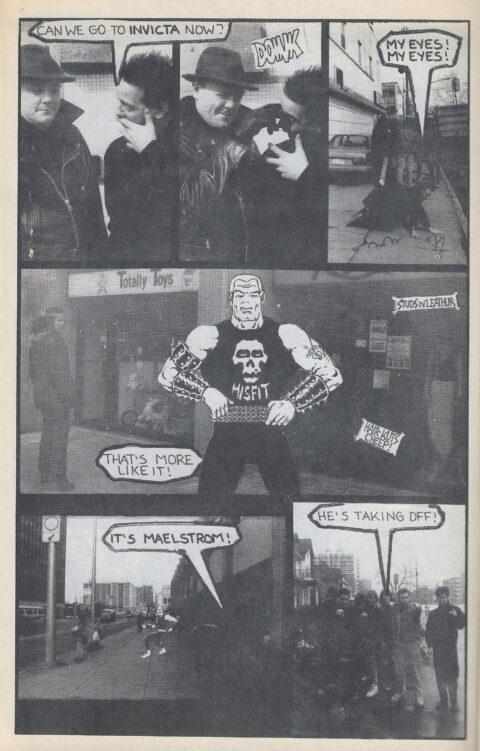
The final issue of Maelstrom is something of a return to form, as Maelstrom finds himself in a different dimension battling a series of strange monsters. Not much happens in the issue other than these battles (which, again Somerville excels at drawing). The comic (and series) ends with Rak-Kur-Rok finding Maelstrom. That’s it. After this, the series was cancelled. It’s an extremely unsatisfying ending and it is unclear if Somerville ever drew issue #12.
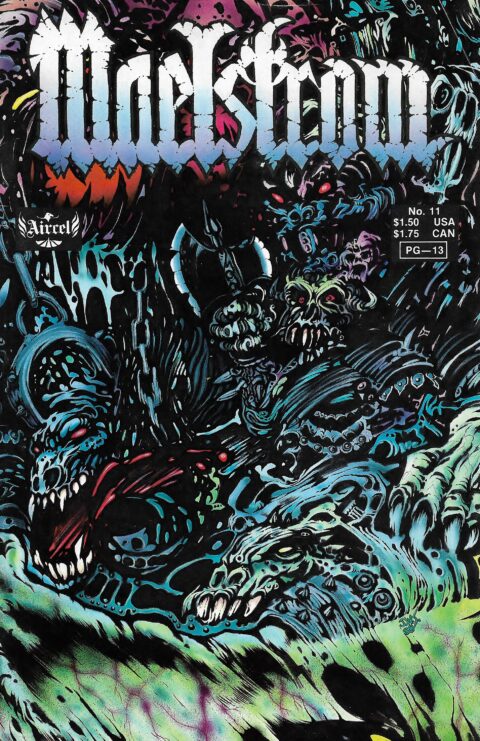
Ultimately, Maelstrom is symbolic of everything that was right with Canadian comics in 1987 due to its high-quality artwork and production value (despite its silly character names). Yet, it is simultaneously an example of everything that was wrong with comics market in 1988. It is a series that crashed and burned with the collapse of the larger market, but by the time issue # 10 was released, the series wasn’t worth reading anymore.
The first story arc is quite satisfying. When Aircel was at its height it really was one of the best comic companies in Canada that consistently released excellent comic books. The fact that it all fell apart so quickly is an unfortunate part of comic history. There was an overabundance of terrible comics being made during this era, but Aircel’s stuff was typically a cut above the rest.
I would have hated to have been a dedicated reader of indie comics back then, especially if I didn’t see the crash coming (which was true for many collectors who were buying comics in the late 1980s who I have spoken to over the years). In a few months, Maelstrom went from being a pretty solid sword and sorcery comic to the disaster of issue # 10. I honestly struggled to read the photo-comic issue to the extent that I didn’t even want to read issue # 11. I read the series over two days and went from extremely bullish to extremely bearish because of how abruptly the photo-comic ruined the entire vibe of the series.
If you stumble across the first six issues of Maelstrom, I recommend giving them a try. The story arc is a decent little piece of high fantasy/sword and sorcery. However, unless you consider yourself a completionist, I wouldn’t recommend purchasing any of the issues after issue # 8.
Thanks for reading this month’s edition of Forgotten Silver everyone. I really appreciate it. I will not be publishing a new column in April due to us having a large number of events coming up at the end of March and beginning of April. Stay tuned for more Canadian Silver Age greatness in May. I have something planned that I hope will be worth the wait.
In the meantime, East Coast Toys and Games is now on Instagram. The link is now on all of my columns here at Comic Book Daily. We will be posting different content on Instagram than what we post on Facebook and it is another way to get in touch. We are considering expanding our social media profile to other platforms soon.
Have a great March and April everyone. See you in May!

